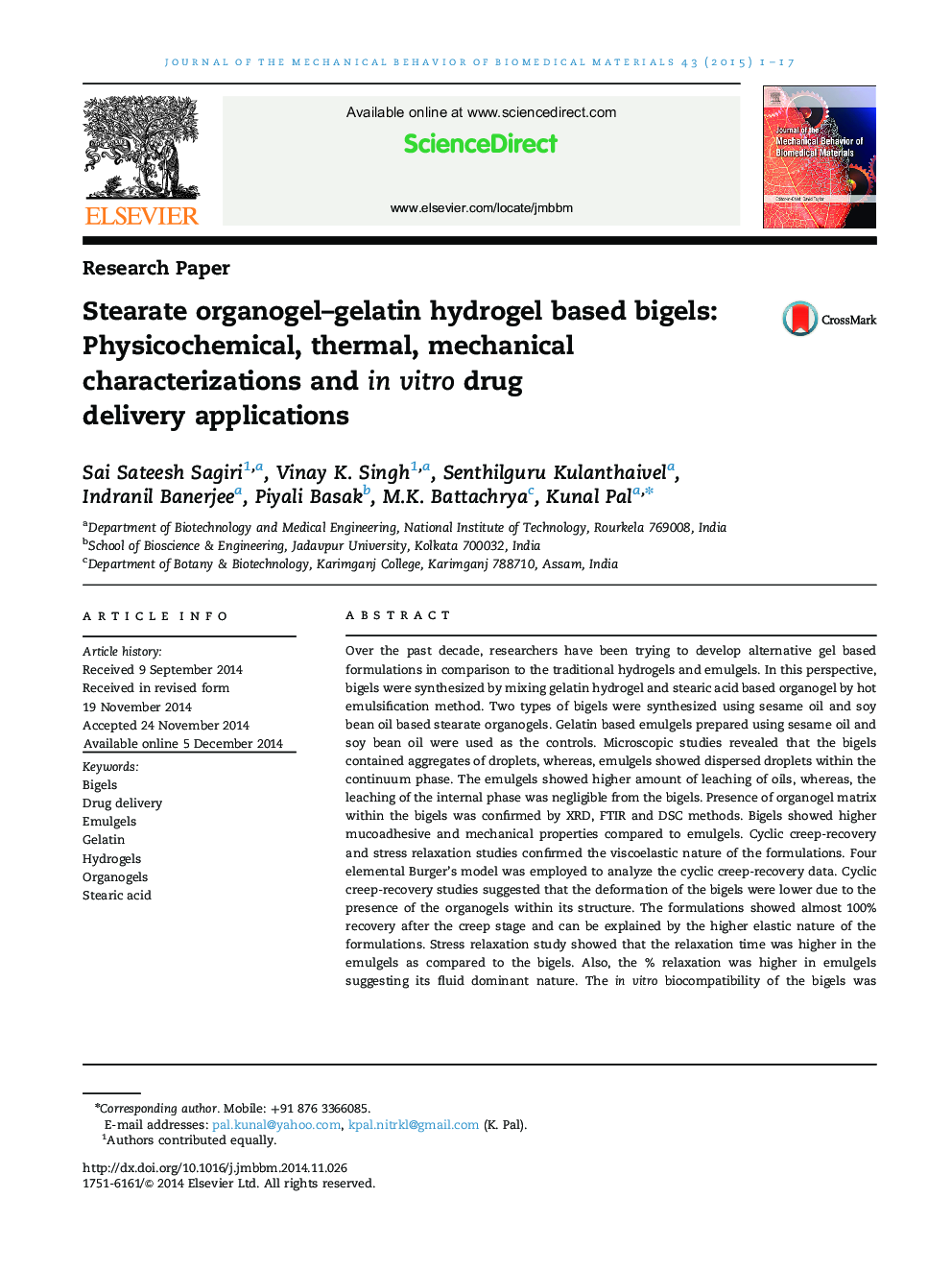| Article ID | Journal | Published Year | Pages | File Type |
|---|---|---|---|---|
| 810665 | Journal of the Mechanical Behavior of Biomedical Materials | 2015 | 17 Pages |
•Novel stearate organogel–gelatin hydrogel based bigels have been synthesized.•Physicochemical, thermal and mechanical characteristics of the formulations were evaluated in depth.•The bigels showed better mucoadhesion properties by preventing the oil leaching.•The developed bigels hold promise for the sustained release of bioactive agents.
Over the past decade, researchers have been trying to develop alternative gel based formulations in comparison to the traditional hydrogels and emulgels. In this perspective, bigels were synthesized by mixing gelatin hydrogel and stearic acid based organogel by hot emulsification method. Two types of bigels were synthesized using sesame oil and soy bean oil based stearate organogels. Gelatin based emulgels prepared using sesame oil and soy bean oil were used as the controls. Microscopic studies revealed that the bigels contained aggregates of droplets, whereas, emulgels showed dispersed droplets within the continuum phase. The emulgels showed higher amount of leaching of oils, whereas, the leaching of the internal phase was negligible from the bigels. Presence of organogel matrix within the bigels was confirmed by XRD, FTIR and DSC methods. Bigels showed higher mucoadhesive and mechanical properties compared to emulgels. Cyclic creep-recovery and stress relaxation studies confirmed the viscoelastic nature of the formulations. Four elemental Burger’s model was employed to analyze the cyclic creep-recovery data. Cyclic creep-recovery studies suggested that the deformation of the bigels were lower due to the presence of the organogels within its structure. The formulations showed almost 100% recovery after the creep stage and can be explained by the higher elastic nature of the formulations. Stress relaxation study showed that the relaxation time was higher in the emulgels as compared to the bigels. Also, the % relaxation was higher in emulgels suggesting its fluid dominant nature. The in vitro biocompatibility of the bigels was checked using human epidermal keratinocyte cell line (HaCaT). Both emulgels and bigels were biocompatible in nature. The in vitro drug (ciprofloxacin) release behavior indicated non-Fickian diffusion of the drug from the matrices. The drug release showed good antimicrobial effect against Escherichia coli. Based on the results, it was concluded that the developed bigels may have huge potential to be used as alternatives to emulgels.
Graphical abstractFigure optionsDownload full-size imageDownload high-quality image (542 K)Download as PowerPoint slide
